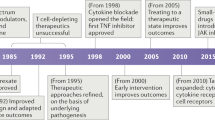Abstract
The immune system has a remarkable ability to respond to seemingly endless antigens. In essence, a productive immune response takes place along a well defined but treacherous line, that is to effectively eradicate pathogens, and at the same time avoid causing damage to self organs. This type of response is fine-tuned, at least in part, by a complex array of pathways that either promote or inhibit the activation of innate and adaptive immune cells. Much effort has been focused on pathways that can support immune activation. In this article, we review specifically pathways that can inhibit immune responses and maintain immune homeostasis, highlighting our recent understanding on the role of inhibitory receptors that selectively engage the self MHC class I molecules and the B7 superfamily members, we also discuss the inhibitory Fc receptors and inhibitory cytokines and how such pathways, either individually or collectively, regulate innate and adaptive immune responses. Finally, we summarize new emerging approaches on how such negative pathways can be therapeutically modulated in various disease settings.
Similar content being viewed by others
Author information
Authors and Affiliations
Corresponding author
Rights and permissions
About this article
Cite this article
Zhang, J., Xiao, X., Liu, W. et al. Inhibitory Receptors of the Immune System: Functions and Therapeutic Implications. Cell Mol Immunol 6, 407–414 (2009). https://doi.org/10.1038/cmi.2009.52
Received:
Accepted:
Issue Date:
DOI: https://doi.org/10.1038/cmi.2009.52
- Springer Nature Limited
Keywords
This article is cited by
-
Decidual natural killer cells and the immune microenvironment at the maternal-fetal interface
Science China Life Sciences (2016)
-
CD56brightCD25+ NK cells are preferentially recruited to the maternal/fetal interface in early human pregnancy
Cellular & Molecular Immunology (2015)
-
Low-level laser reduces the production of TNF-α, IFN-γ, and IL-10 induced by OVA
Lasers in Medical Science (2013)




